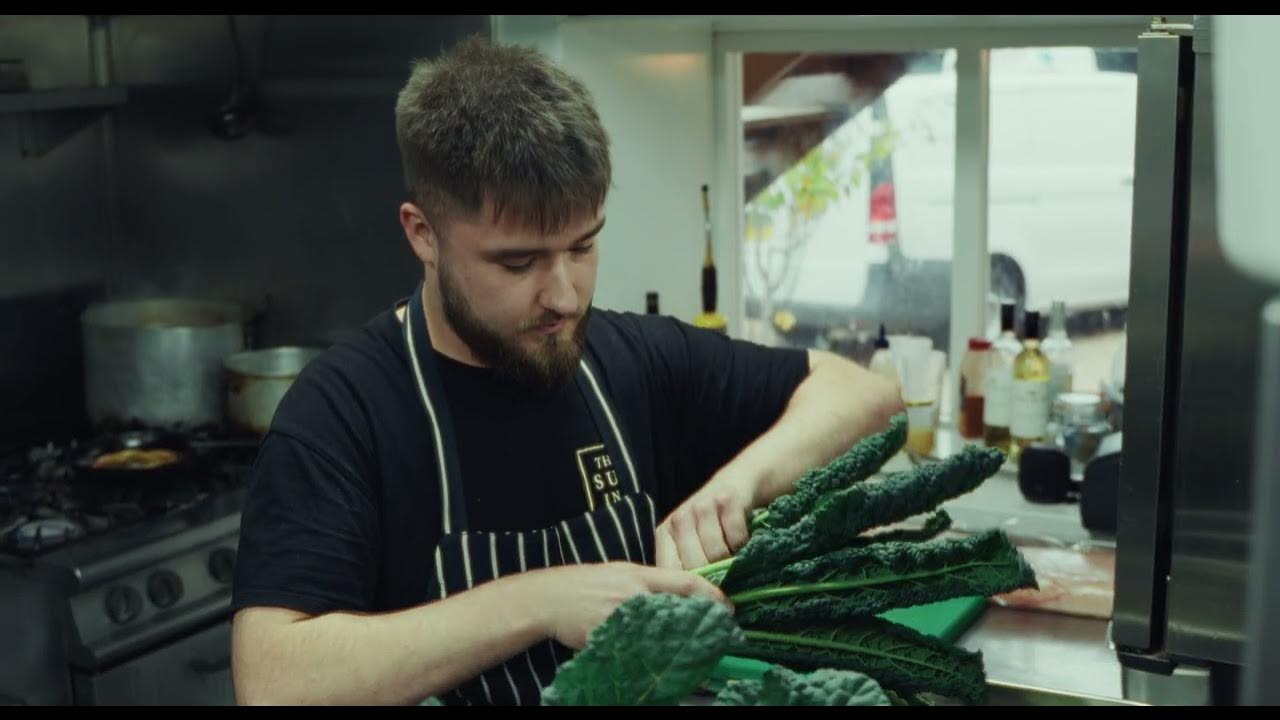Traditional Farm Design vs. Permaculture Design: What's the Difference?
Summary
TLDRThis video explains the differences between a standard farm layout and a permaculture farm design. It covers key elements such as water management, sun orientation, and sustainable farming practices. Permaculture focuses on working with natural water flows, using trees to prevent erosion, and optimizing land for both crops and livestock. The video emphasizes the importance of designing the farm for long-term sustainability by using techniques like swales, tree foraging systems, and intercropping. Viewers are encouraged to consider permaculture's benefits for the environment, biodiversity, and farm productivity.
Takeaways
- 🌍 A Standard Farm Layout typically doesn't consider sun angles and topography, leading to challenges like erosion and poor water management.
- 🏡 In traditional layouts, houses are placed near roads for convenience, but this may not optimize sun exposure or water flow management.
- 🚜 Farms are usually divided into rectangular or triangular sections, which can cause soil erosion, especially during heavy rains.
- 🌿 Permaculture design focuses on sustainability, capturing rainwater, and working with natural elements like slope and water flow.
- 💧 Water management is crucial in permaculture, using contour lines and swales to retain rainwater and prevent erosion.
- 🏠 Houses in permaculture are recommended to be built on mid-slopes for optimal water flow control, temperature regulation, and sun exposure.
- 🌳 Trees are planted on steeper parts of the property to prevent soil erosion and serve as a source of firewood.
- 🐄 Forage trees are integrated into pastures to provide shade, improve soil fertility, prevent erosion, and support livestock production.
- 🌾 In permaculture, grains are usually intercropped with legumes and occupy a small portion of the farm, with a focus on fruit trees and vegetables.
- 🍇 Dwarf fruit trees and berry bushes are placed in areas to prevent shading, and windbreaks are needed if wind is a significant issue on the property.
Q & A
What are the main differences between a standard farm layout and a permaculture farm design?
-A standard farm layout typically has structures and fields oriented towards roads without considering sun angles or water flow, and the property is divided into rectangular or triangular sections. In contrast, permaculture design emphasizes sustainable practices by considering water management, natural contours, and positioning elements based on sun angles and slope, leading to a more integrated and environmentally friendly system.
Why is water flow the first aspect to consider in a permaculture design?
-Water flow is the first step in a successful permaculture design because understanding and managing water resources is crucial for maintaining soil moisture, preventing erosion, and creating a sustainable environment. By capturing and retaining water through swales and other water features, a permaculture system ensures the landscape remains productive, even in arid areas.
What are 'swales,' and why are they important in permaculture?
-Swales are shallow, water-retaining ditches dug along the contour lines of the land. They are used in permaculture to capture rainwater, reduce erosion, and provide water to trees planted on the mounds created from the excavated soil. This technique helps keep water in the landscape for longer, improving plant growth and reducing water needs.
Why is it recommended to build a house on a mid-slope rather than at the top or bottom in permaculture?
-Placing a house on a mid-slope is recommended because it allows for better water management and natural temperature regulation. A mid-slope position avoids water accumulation (potential flooding) at the bottom and prevents rapid water runoff and erosion from the top. It also benefits from a buffer against extreme temperatures and provides optimal sun exposure for nearby gardens.
What are the benefits of incorporating forage trees in pastures in a permaculture system?
-Forage trees provide multiple benefits in permaculture pastures, including: 1) Nutrient cycling through their nitrogen-rich leaves, which act as natural fertilizers. 2) Soil stabilization and erosion prevention through their root systems. 3) Shade for animals and reduced soil moisture loss. 4) Habitat for wildlife, increasing biodiversity and the overall resilience of the ecosystem.
How should plant placement be considered in a permaculture design depending on the hemisphere?
-In the Northern Hemisphere, the southern slopes receive the most sunlight, making them ideal for cultivation. In the Southern Hemisphere, the northern slopes receive the most sunlight. Careful consideration of sun angles ensures that trees are not shaded by others unless strategically needed for protection in extremely sunny climates.
Why is it preferable to place normal-sized trees on slopes rather than flat areas?
-Placing trees on slopes prevents them from shading other crops in a flat landscape and takes advantage of natural water flows, which slopes tend to capture more effectively. Trees on slopes help reduce soil erosion and stabilize the land, making the area less prone to degradation and more suitable for tree-based cultivation.
What are some common mistakes in traditional farm design that permaculture seeks to address?
-Traditional farm designs often disregard water flows, land contours, and sun angles, leading to issues like soil erosion, poor water management, and inefficient use of space. Permaculture addresses these by designing for natural water retention, using contour lines, and placing structures and plants in optimal positions for sunlight and water flow.
How does intercropping grains with other plants benefit the soil in permaculture?
-Intercropping grains with legumes and other species improves soil fertility by naturally fixing nitrogen, reduces pest populations, and prevents diseases. This technique also helps conserve soil by reducing erosion and promoting biodiversity, which leads to healthier and more resilient crop systems.
What factors would change the entire design of a permaculture farm?
-Factors like strong prevailing winds, severe slopes, and extreme weather conditions can significantly alter a permaculture design. For example, wind breaks may need to be established before planting to protect crops and animals, while extreme slopes may require additional erosion control measures.
Outlines

このセクションは有料ユーザー限定です。 アクセスするには、アップグレードをお願いします。
今すぐアップグレードMindmap

このセクションは有料ユーザー限定です。 アクセスするには、アップグレードをお願いします。
今すぐアップグレードKeywords

このセクションは有料ユーザー限定です。 アクセスするには、アップグレードをお願いします。
今すぐアップグレードHighlights

このセクションは有料ユーザー限定です。 アクセスするには、アップグレードをお願いします。
今すぐアップグレードTranscripts

このセクションは有料ユーザー限定です。 アクセスするには、アップグレードをお願いします。
今すぐアップグレード5.0 / 5 (0 votes)






